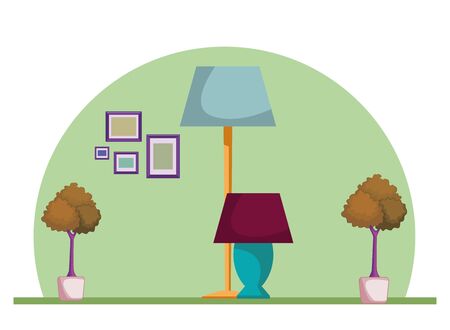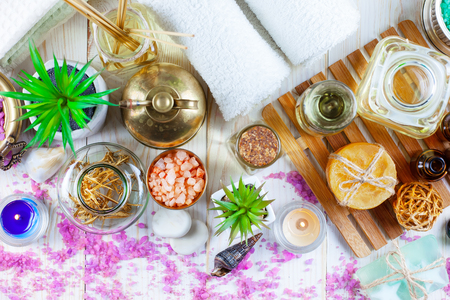Introduction: The Intersection of Feng Shui and British Interior Design
When considering how to elevate the atmosphere of a British home, it is natural to turn to both the timeless elegance of local aesthetics and the wisdom of global traditions. The integration of British interior design with the ancient Chinese principles of Feng Shui offers a unique approach to creating spaces that are not only visually appealing but also energetically balanced. At the heart of this intersection lies the strategic use of mirrors—a staple in both British décor and Feng Shui practice. In Britain, mirrors often serve as functional ornaments, reflecting light into dimly lit Victorian terraces or adding a touch of grandeur to Georgian townhouses. Yet, beyond their decorative charm, mirrors play a pivotal role in shaping the flow of energy within a room according to Feng Shui philosophy. Understanding where and how to place mirrors is crucial; it influences everything from the perceived spaciousness of a room to the emotional wellbeing of its inhabitants. By exploring this harmonious blend, we can discover how thoughtful mirror placement not only celebrates British style but also enhances positive energy throughout our living spaces.
2. The British Approach to Style and Space
British interior design is renowned for its refined blend of tradition, subtlety, and understated luxury. When choosing mirrors that both reflect the principles of Feng Shui and respect British aesthetics, it is essential to understand the key elements that define interiors across the UK. Hallmarks such as classic elegance, muted colour palettes, and period architectural details all play a significant role in shaping décor choices and how spaces are arranged.
Classic Elegance in British Interiors
The foundation of British style lies in an effortless mix of timelessness and sophistication. This is often seen in the selection of furniture with graceful lines, well-crafted woodwork, and materials like velvet, linen, and wool. Mirrors chosen for these spaces tend to have restrained frames—think antique brass, painted wood, or gently patinated finishes—to maintain an air of quiet dignity rather than ostentation.
Muted Palettes: Harmonising Colours
British homes are frequently characterised by soft, muted colours—sage greens, dusty blues, taupes, and creams—which evoke calm and create a backdrop for curated collections of art and objects. When selecting a mirror for such an environment, frame finishes and glass tints should complement this palette. For instance:
| Room Palette | Recommended Mirror Frame Finish | Glass Tint Suggestion |
|---|---|---|
| Sage Green & Cream | Brushed Brass or Painted Wood | Standard Clear or Soft Grey |
| Taupe & Navy Blue | Dark Walnut or Antiqued Silver | Light Bronze |
| Dusty Blue & White | Pewter or Whitewashed Wood | Clear or Slightly Blue-Tinted Glass |
Period Details: Honouring Architectural Heritage
From Georgian cornices to Victorian fireplaces, British homes often celebrate their architectural past. Choosing mirrors that echo these details—such as ornate gilded frames for grander rooms or simple bevelled edges for more modest settings—helps reinforce a sense of continuity between old and new. Placement also matters; above a mantelpiece or within an alcove, mirrors can enhance original features while balancing energy flow as advised by Feng Shui.
Summary Table: British Design Elements & Mirror Choices
| Design Element | Mirror Characteristics to Consider | Cultural Rationale |
|---|---|---|
| Classic Elegance | Subtle frames, quality craftsmanship | Avoids excess; reflects refinement prized in British decor |
| Muted Palettes | Complementary frame finishes and glass tints | Cohesiveness without overpowering existing scheme |
| Period Details | Historically sympathetic styles (e.g., Regency, Victorian) | Respects heritage while updating functionally with Feng Shui principles |
By appreciating the nuances of British style—from its palette choices to its reverence for heritage—homeowners can select mirrors that not only align with Feng Shui but also honour the unique character of their space.

3. Feng Shui Fundamentals: Mirrors as Energy Tools
In Feng Shui, mirrors are far more than mere decorative accessories; they are powerful tools for manipulating the flow of energy, or chi, within a space. The reflective qualities of a mirror can either enhance or disrupt the natural movement of chi, making their placement a matter of thoughtful consideration rather than chance. Traditionally, Feng Shui practitioners regard mirrors as instruments that can expand a room’s energetic boundaries, bounce light into shadowed corners, and symbolically double whatever they reflect—be it abundance or clutter.
The concept of balance and harmony is central to Feng Shui, and the strategic use of mirrors plays a pivotal role in achieving these aims. Placing a mirror opposite a window with a pleasant view can draw positive energy into the home, while a mirror reflecting disorder or sharp angles may inadvertently amplify negative influences. Equally important is avoiding the placement of mirrors directly facing entrances, as this is believed to push beneficial energy back out of the space. These nuanced guidelines highlight how the careful selection and positioning of mirrors can create an environment that feels both harmonious and energetically vibrant—an approach that blends seamlessly with British sensibilities towards order, proportion, and understated elegance.
4. Selecting Mirror Types: Materials, Shapes, and Frames
When blending British aesthetics with Feng Shui principles, selecting the right mirror involves more than just personal taste; it’s about harmonising visual appeal with the energy of your home. British interiors often exude a sense of tradition, subtlety, and elegance, while Feng Shui focuses on balance and positive flow. Let’s break down how to choose mirrors that honour both perspectives.
Materials: Balancing Tradition and Energy
British taste favours high-quality materials such as gilt, wood, and antique glass. A gilt frame can add a touch of Regency splendour or Victorian grandeur, perfectly suited for period properties or classic townhouses. Conversely, contemporary British interiors may lean towards minimalist metal or simple wooden frames. From a Feng Shui viewpoint, the material should suit the room’s purpose—avoid overly sharp metal in restful spaces like bedrooms, and favour warm-toned woods or soft golds for welcoming energy in living areas.
Shapes: Navigating Classic Elegance and Flow
The shape of a mirror is equally significant. Traditional British style often incorporates oval or rectangular mirrors, both of which are versatile and timeless. Circular mirrors can soften angular spaces and are viewed favourably in Feng Shui for promoting harmony. Avoid mirrors with irregular or jagged edges, as they disrupt the flow of Qi (energy) according to Feng Shui principles.
Mirror Shapes: British Style Meets Feng Shui
| Shape | British Aesthetic | Feng Shui Guidance |
|---|---|---|
| Rectangular | Classic, versatile; suits Georgian & Victorian homes | Promotes clarity; ideal for hallways & studies |
| Oval | Elegant, softer lines; common in traditional settings | Encourages gentle energy flow; suitable for bedrooms & lounges |
| Circular | Modern yet timeless; adds softness to interiors | Enhances unity; best for communal spaces like dining rooms |
| Irregular/Abstract | Contemporary flair; bold statement pieces | Use sparingly; may disrupt energetic balance if overused |
Frames: The Finishing Touch
The frame can make or break how well a mirror sits within its environment. Ornate gilt frames evoke British heritage and pair beautifully with antiques and plush fabrics. Slim black or chrome frames fit minimalist or industrial schemes found in modern UK flats. When considering Feng Shui, avoid frames with aggressive spikes or motifs that represent conflict—gentle curves or intricate but harmonious patterns are preferable.
Quick Tips for Mirror Selection:
- If your décor is traditional: Opt for gilt or carved wood frames paired with clear or lightly aged glass.
- If you prefer modern minimalism: Choose simple shapes with thin metal frames; ensure placement reflects natural light rather than clutter.
- Avoid mirrors facing directly onto beds or doors: In Feng Shui, this is believed to disturb restfulness and energy stability.
- Select quality over quantity: One well-chosen mirror often has greater impact—and better energy—than several mismatched pieces.
By thoughtfully considering material, shape, and framing details, you can select mirrors that not only enhance your space’s British character but also invite harmonious energy according to Feng Shui wisdom.
5. Strategic Placement: Navigating British Room Layouts
When blending British aesthetics with Feng Shui principles, the placement of mirrors is as crucial as their design. British homes, especially classic terraced houses and Victorian flats, often feature unique architectural layouts—narrow corridors, bay windows, and compact rooms—that require thoughtful mirror positioning to maximise both light and energy flow.
Amplifying Light in Narrow Spaces
In traditional British homes, hallways and staircases can be dimly lit due to limited natural light. Positioning a mirror opposite or adjacent to a window in these areas can effectively reflect daylight deeper into your home. This not only brightens the space but also symbolises inviting positive energy according to Feng Shui.
Expanding Compact Rooms
Many period properties have smaller sitting rooms or bedrooms. To give an illusion of space, consider placing a large mirror on the longest wall or above the mantelpiece. This technique visually doubles the room’s size while harmonising with British interior sensibilities—think elegant gilt frames or understated wooden borders.
Enhancing Energy Flow
Feng Shui discourages mirrors facing directly onto doors, as this can ‘bounce’ energy out of the room. Instead, angle mirrors to gently guide energy around corners or towards focal points like a fireplace—a typical feature in British lounges. In kitchens and dining areas, mirrors can reflect convivial gatherings, amplifying warmth and abundance.
Considerations for Period Features
If your home includes distinctive elements such as decorative cornices or stained glass, use mirrors to celebrate these features without overwhelming them. Opt for placements that capture and echo their beauty rather than compete for attention.
Final Tips for British Homes
Avoid cluttering walls with too many reflective surfaces; balance is key to both aesthetic appeal and energetic harmony. By strategically positioning mirrors in line with both British design traditions and Feng Shui guidance, you can create a living environment that feels spacious, welcoming, and energetically vibrant.
6. Balancing Tradition and Modernity
Incorporating mirrors that resonate with both British aesthetics and Feng Shui principles requires a thoughtful balance between tradition and modernity. The rich history of British interiors is often reflected in elements such as ornate gilded frames, Victorian bevelled glass, and the restrained elegance of Georgian design. When these classic features are combined with Feng Shui wisdom—where mirrors are tools for channelling energy, expanding space, and reflecting harmony—the result can be both visually captivating and spiritually harmonious.
Integrating Historical British Elements
Start by recognising the enduring appeal of traditional British décor. Antique or reproduction mirrors with baroque or rococo detailing not only pay homage to heritage but also serve as focal points in any room. However, to avoid visual heaviness or energetic stagnation, position these mirrors where they amplify natural light without directly facing doors or windows—an important guideline in Feng Shui that prevents positive chi from escaping.
Harmonising with Feng Shui Principles
While historic British styles favour symmetry and craftsmanship, Feng Shui encourages mindful placement for optimal energy flow. Choose mirrors that subtly echo architectural details—arched tops reminiscent of period windows or woodwork matching existing mouldings—to create cohesion. Avoid cluttering walls with too many reflective surfaces; instead, let each mirror serve a purpose, whether it’s enhancing spatial perception or symbolically doubling abundance in dining areas.
Modern Touches Without Discord
Contemporary British interiors often embrace minimalism and clean lines. Sleek, frameless mirrors or those with understated metallic trims can modernise a traditional setting without clashing energetically. Layering modern designs alongside vintage pieces allows you to honour the past while keeping your space fresh and inviting. The key is to ensure every mirror feels intentional—decorative yet functional, rooted in tradition but attuned to contemporary living and spiritual well-being.
7. Conclusion: Achieving Cohesive, Harmonious Spaces
In summary, selecting mirrors for your home is far more than a practical decision; it is an opportunity to blend the timeless elegance of British aesthetics with the nuanced guidance of Feng Shui principles. By considering classic British design cues—such as ornate frames, heritage finishes, and placement that reflects natural light—you can evoke a sense of tradition and sophistication. Meanwhile, mindful attention to Feng Shui encourages you to position mirrors thoughtfully, harnessing positive energy flow while avoiding common pitfalls like facing doors or beds directly. When these two approaches are combined, you empower yourself to create interiors that are both visually charming and energetically harmonious. Remember to select mirrors that complement your existing décor, enhance spatial perception, and amplify light without compromising on comfort or warmth. With a balanced approach, your living spaces will not only reflect quintessential British character but also foster wellbeing and balance for all who enter.


